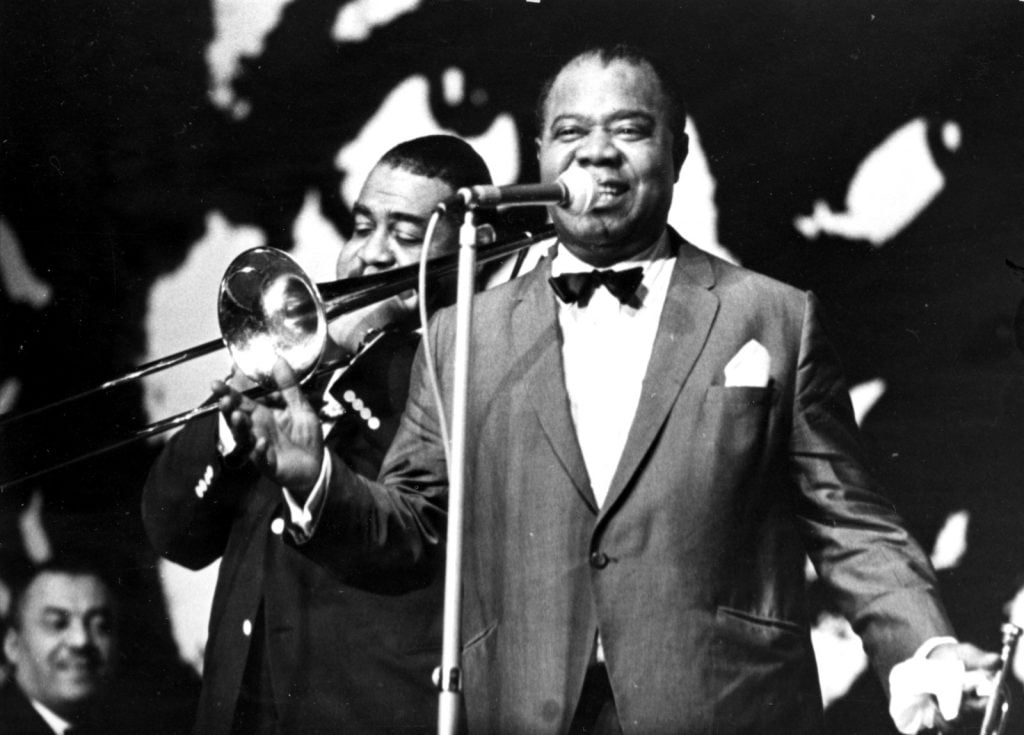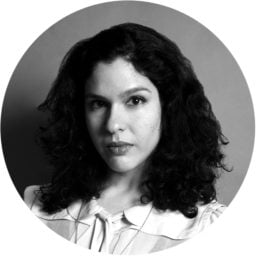The year 1965 marked a turning point for art and culture in East Germany, when the ruling Socialist Unity Party decided to take a hard line against the “nihilistic“ and “pornographic“ Western influences in East German theater, music, art, and literature, effectively banning films, records, bands, books, and various artists from appearing in public.
Jazz, however, was a tricky subject. While technically stemming from a Western capitalist country, the genre sometimes got a pass from officials behind the Iron Curtain on account of its African-American roots and the context of oppression. But it was on a case-by-case basis, with the GDR’s party line often oscillating between total rejection of the genre and tacit acceptance.
The jazz legend Louis Armstrong’s 1965 tour of East Germany is an example of the latter—it was an event that would later prove influential for a burgeoning and youth-infused East German jazz scene. A new exhibition at Das Minsk, a privately funded museum that opened on the outskirts of Berlin last year in the former-East German city of Potsdam, takes Armstrong’s famous tour through the Eastern Bloc as a point of departure.
How exactly the tour came about in the middle of the Cold War is a question with different answers. It later emerged, for example, that a Swiss intermediary paid Armstrong’s fee and, in turn, received antiques and 17-century firearms by the currency-poor German Democratic Republic. Handshake deals aside, the official protocol at the time stated that the jazz legend had received an invitation from the East German Artists’ Agency on account of his “activism against racism.” Armstrong’s tour dates were tightly packed, with 16 out of 17 sold-out concerts across the GDR taking place in only nine days, reaching an estimated 45,000 fans. He toured to five other socialist countries during that four-week tour of Eastern Europe, before returning to the deep social turmoil that was taking shape in the U.S.
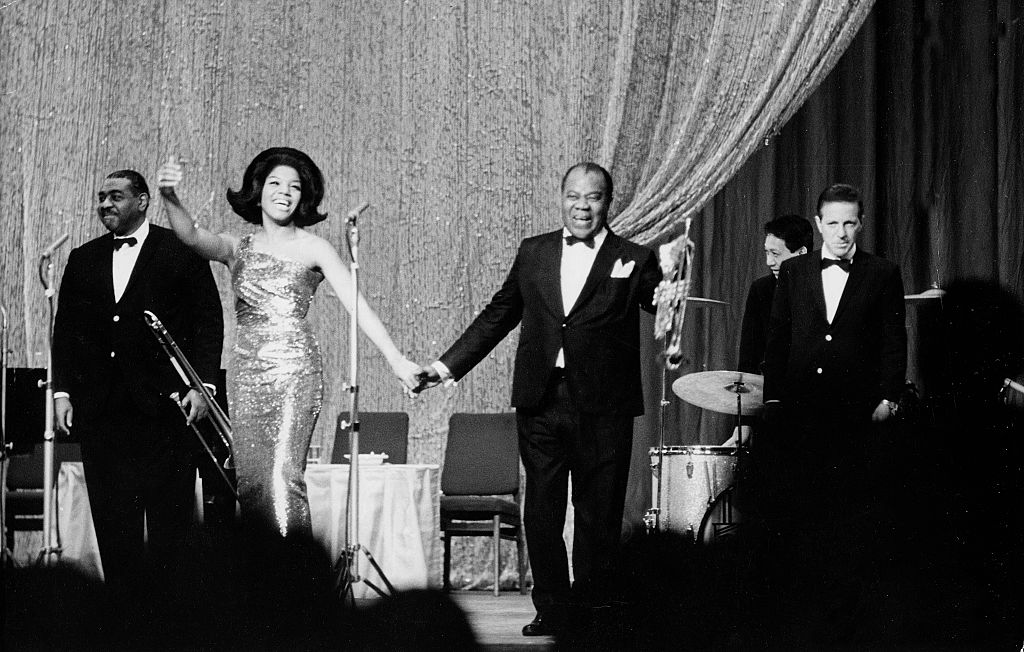
Louis Armstrong with his ‘All Stars’ musicians and singer Jewel Brown in the Friedrichstadt-Palast, Berlin. Photo: ADN-Bildarchiv/ullstein bild via Getty Images
The exhibition’s title “I Have Seen the Wall” is taken from Armstrong’s answer to a question posed during the Berlin press conference for the tour. When pressed by a West German journalist to comment on the Berlin Wall that divided Germany’s capital, Armstrong replied: “I have seen the wall, and I’m not worried about the wall; I’m worried about the audience I’m going to play to tomorrow night! When you get into the concert hall, forget about everything and concentrate on Satchmo.” He then added, however, “I can’t say what I want to say, but if you’ll accept it, forget about all that other bullshit.”
Indeed, the political tension present at the press conference stood in stark contradiction to the moving evening of the concert at the Friedrichstadtpalast in Berlin. Jazz pianist and artist Jason Moran, who co-curated the show with Paola Malavassi, created a 22-minute work for the show that looks at the two events side-by-side. The curators have also recreated the former concert hall’s lush stage curtain. Throughout the venue are works by artists including Adrian Piper, Lorna Simpson, and Gordon Parks on view alongside pieces by German and East German artists such as artist and jazz giant Peter Brötzmann, who passed away this year, as well as artists Rosemarie Trockel and Ruth Wolf-Rehfeldt. An excerpt of Pina Bausch’s Nelken Line is also on view, in which the legendary choreographer famously uses Armstrong’s West End Blues.
While the show does include some fascinating tour photography from the GDR Photo Archive and personal effects from Armstrong’s own collection—including a Selmer B-flat trumpet and a mouthpiece engraved with the jazz star’s nickname “Satchmo”—the curators are hoping to tackle larger questions with this show. With artworks by German and American artists, and a new commission by Los Angeles filmmaker Darol Olu Kae, the exhibition looks at the tensions between personal and political realities, individual voices within oppressive systems, and the power of music.
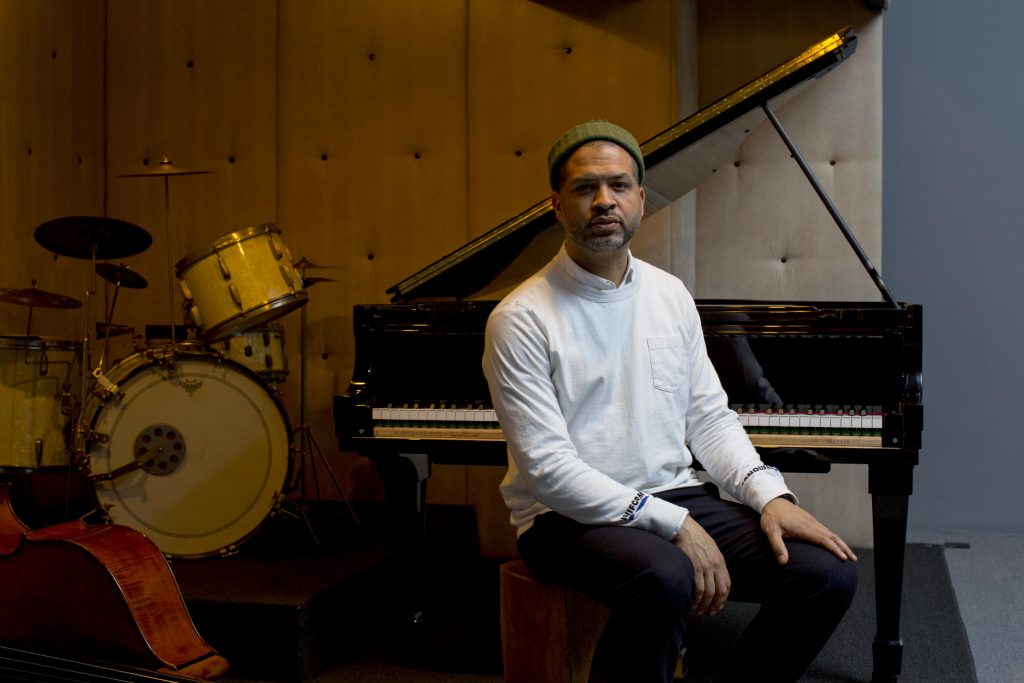
Jason Moran, jazz pianist and artist, co-curated the exhibition at Das Minsk. Photo: Cameron Wittig
“Das Minsk is a space to ask exactly those questions,” said Malavassi. “We’re interested in the ambivalence of the history of the space we’re working in. And we want to keep it complex. The questions we’re asking with this show are very relevant; they are about the production and reception of music, about racism and activism, then and now, about political statements, and the way we all participate in the political atmosphere of our time.”
One example of how the curators chose to bring certain questions to the surface is evident in the inclusion of a room-filling installation by Glenn Ligon from 2014, called Untitled (Bruise/Blues). It is based on a 1966 composition by Steve Reich, which uses a recording of Daniel Hamm, one of a group of Black men whose detention led to the 1964 Harlem Riots, recounting his experience of being wrongfully arrested and abused in police custody. Armstrong added the song (What Did I Do to Be So) Black and Blue to his repertoire during that 1965 tour, using his music to make a statement about what was happening back home.
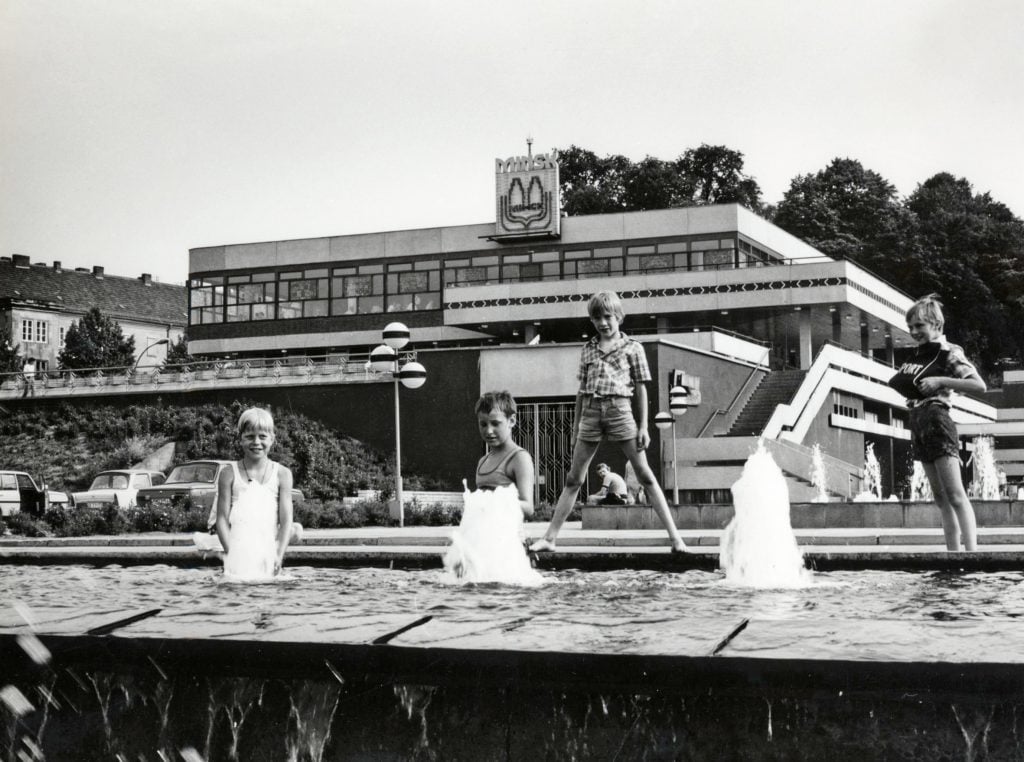
View of the terrace restaurant “Minsk” in 1980. The venue is being revamped into a private museum.
© Wohnungsbaukombinat, Photo: Heidemarie Milkert
Moran, who also recently curated the permanent exhibition at the newly opened Louis Armstrong Center in Corona, Queens, put Armstrong’s tour into the context of his eventual return to the U.S.: “He’s 65 years old when he’s doing this. It’s not like he’s 20—he’s seen the worst of what the world has to offer. And part of his reflection is that he gets to go home and think, I’m now back in America, I’m in Black America. And now I’m also under this ‘curtain‘. He’s still disheveled at where his placement is in the Civil Rights Movement, what it meant in East-Germany when he was there versus what it means in Queens. When he’s home, I think he’s amassing a kind of understanding of what does his music mean—and this is late in the artist’s life. I see his return home and the actions he takes as a reflection.”
Armstrong kept meticulous audio diaries of his life—he recorded his thoughts and conversations, and always traveled with magnetic audio tapes. Granted unprecedented access to the archive of Armstrong’s audio files, the celebrated documentarian Sascha Jenkins released a new documentary in 2022, titled Louis Armstrong’s Black & Blues, which offered a revelatory reappraisal of the jazz legend’s political stance, which he rarely commented on openly despite his struggle with racism in the U.S. Some of those tapes are being shown at Das Minsk, including the self-made, artfully collaged boxes in which Armstrong kept them. The sound of Armstrong cutting paper to make a collage once he gets off the stage, caught on those tapes, is just one of the unexpected moments that the exhibition will render accessible.
“We, musicians who travel the world often consider ourselves as exporters, and your job is to deliver something that’s maybe ‘foreign,’” said Moran. “Louis Armstrong has been delivering a kind of subversive freedom model, coded in the music itself. Jazz offers this sound of what people think freedom can be.”
“I’ve Seen the Wall. Louis Armstrong on Tour in the GDR 1965” is on view at Das Minsk from September 16, 2023, through February 4, 2024
More Trending Stories:
A Renowned Chinese Artist Has Been Found Guilty of Brazen Plagiarism After He Made Millions From Copying a Belgian Artist’s Work
In His East Hampton Studio, Painter David Salle Starts His Days Searching for Artistic Transformation and Ends Them With a Cold Beer
Step Inside Artist Dale Chihuly’s Stunning Seattle Studio, Filled With an Epic Antiques Collection and His Otherworldly Glass Forms
A Woman Bought a $4 Painting at a Thrift Store for Its Frame. Now, It’s Been Revealed as an N.C. Wyeth, Worth as Much as $250,000
Your Go-To Guide to All the Art Fairs Taking Place in New York During the 2023 Edition of Armory Week
Artists to Watch This Month: 10 Solo Gallery Exhibitions to Seek Out in September in New York
Venice Biennale Star Sonia Boyce Has Joined the Ranks at Hauser and Wirth, After Departing Simon Lee Gallery in June
